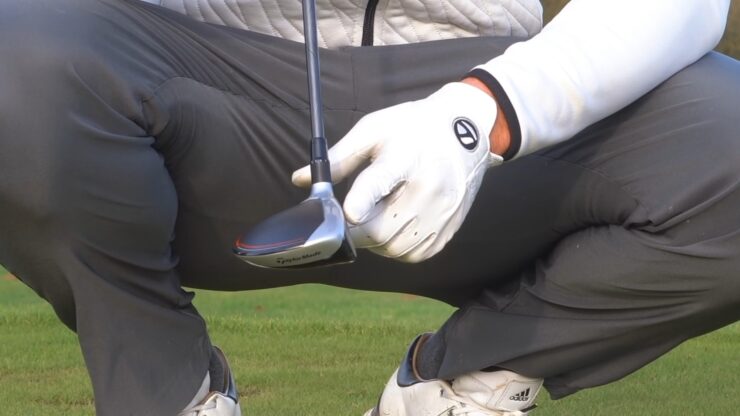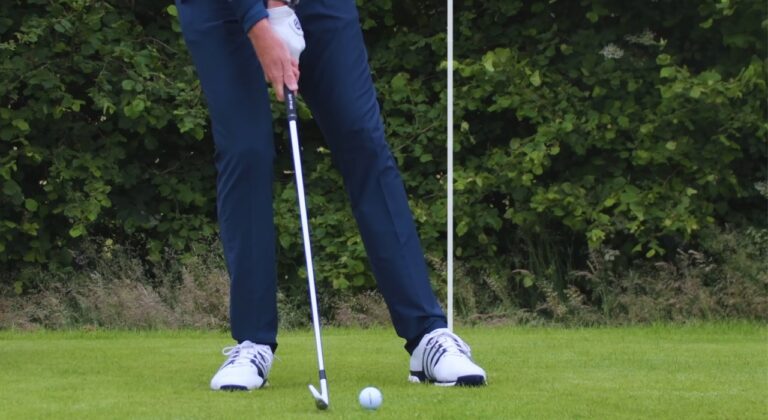In order to play the classic and widely popular sport of golf, one needs a golf club. Golf clubs are essential tools used by golfers because they are what are used to hit golf balls. While some people may think that all clubs are the same and that one is enough, there are actually various types of clubs each with unique features and purposes.
There is a very good reason for this because not every situation in golfing is the same. During specific moments and areas at every hole, there is a need for a different type of hit and/or swing. This is where the various different clubs come into the picture.
Types of Golf Clubs

1. Drivers
Drivers, also known as woods, are the longest clubs in any golfer’s bag. They are made to hit the ball the furthest distance and are used at the very first hit when the ball is on the tee.
This means that you need it exactly 18 times during a classic 18-hole session. Drivers typically have a large head, a long shaft, and a low degree of loft, a combination that makes them perfect for long shots off the tee.
2. (Fairway) Woods
Fairway woods, often referred to as woods when the aforementioned are called drivers, are similar to them but have shorter shafts and slightly higher lofts. These clubs are great for long shots from the fairway or the rough. They are also useful for hitting the ball off the tee when the driver is too much, like for example on the shorter par 3 or par 4 holes.
3. Irons
Irons are used for shots that range from the fairway or the rough. They have shorter shafts and higher degrees of loft than woods making them ideal for approach shots. Their numbers range from 1 to 9. The lower the number of the club, the lower the degree of loft meaning the club is for longer shots.
The higher numbers have a higher degree of loft and are used for shorter shots. So if you need short, you go closer to 9. Irons are usually the most common golf club in the bag with golfers carrying about as many as 6 or 7.
4. Hybrids
Hybrid clubs, also known as rescue clubs, are a combination of irons and woods. Taking the best of both worlds, they have shorter shafts than fairway woods and larger heads than irons. Hybrids are very versatile clubs that can be used for a variety of shots, making them great for those who simply want to play and not think too much.
However, it is often the case that a hybrid is exactly what you need because the shot is not for a true wood or a true iron. Hitting the ball out of the rough or getting out of a sand trap is where hybrids shine.
5. Wedges
Wedge clubs are designed to help golfers get the ball in the air very quickly as well as to land it softly on the green. They have a high degree of loft and they help create more backspin on the ball.
There are different types of wedges like pitching, sand, and lob wedges, each with a different degree of loft and specific purpose. They are usually the final club you use before moving on to the…
6. Putters
There is usually a single putter in the bag of every golfer because one is enough. This club is used to roll the ball along the green and finally into the hole. They have flat faces that help keep the ball on line and rolling smoothly.
Putters can be of different shapes and sizes and choosing the right one makes a significant difference in the putting performance. Since putting is how you finish the holes, it is very important to find the one that suits you most.
Woods VS Hybrids

As important as the rest of the clubs are, this article is about the woods and the hybrids and this is where the debate truly begins. Woods, which can technically be both drivers and fairway woods, are designed to hit the ball the hardest and more importantly, the furthest distance.
Woods have a large head, long shaft, and a low degree of loft, making them crucial in harder and longer shots off the tee and in the fairway.
The low degree of loft allows the ball to travel farther through the air and with less backspin, which results in a longer ground roll. Typically, woods are numbered from 1 to 5, with the lower numbers having a lower loft degree for longer shots.
Traditionally, they got their name because the heads were made exclusively from wood. Today, modern woods also incorporate other materials like metals and composites.
Hybrids are known as rescue clubs because of what they do for the golfers on the course. As their name suggests, they are a cross between two other types, in this case, the woods and irons. They have a smaller head than an average wood, but a larger head than an average iron.
The shaft length is similar to fairway woods but more often than not it is shorter. Hybrids help golfers get out of difficult situations on the holes, for example, the long rough or fairway bunker.
Different variety of shots can be played with them, from long and medium to short. They have a higher degree of loft than woods, a trait that allows the ball to get in the air more quickly and land more softly. Hybrids are numbered similarly to irons, from 1 all the way to 9, the higher numbers having more loft and for shorter shots.
Differences Between Them
Woods and hybrids are both important clubs for golfers to have in their bags. The choice of which club to use depends on the individual’s needs and the specific shot.

When comparing woods and hybrids, there are a few key differences to pay attention to:
Design
Woods have larger club heads than hybrids and they are designed to help generate more power and distance on shots. Hybrids have smaller club heads made for more control and accuracy.
Loft
Woods have a lower degree of loft than hybrids making them ideal for longer shots. Hybrids have a higher degree of loft which gets the ball in the air quicker and lands them softer.
Versatility
Hybrids are a much more versatile type of club than woods and can be used for a very wider range of shots. This gives them the advantage here if you are looking for one since the woods are primarily designed for long shots off the tee (drivers) and the fairway.
Forgiveness
Hybrids are generally a much more forgiving class of clubs than woods meaning they are easier to hit exactly like you want to. They can help reduce the impact of mishits while the woods require more precision and skill to use effectively and consistently.
The 3 Wood
The 3 wood is a type of golf club typically used for longer shots off the fairway. It can also be used at the tee. Just like the rest of them, it has a loft angle between 13 and 15 degrees, lower than the loft angle of the 5 and 7 woods but higher than what the driver has.
This helps reduce the amount of backspin on the ball and allows it to travel further through the air and roll longer on the ground.
Many golfers use the 3 wood for tee shots on shorter par 4 or par 5 holes. This is where accuracy and distance are both very important, too important to risk overdoing it with the driver. It can also be used off the fairway for long approach shots or when attempting to reach the green on the long par 4 or par 5 hole.
The overall popularity of the 3 woods has decreased somewhat in the recent years because more golfers have started using the hybrids instead.
However, many experienced, veteran golfers still find that a 3 wood is too valuable club to remove from the bag and always keep it with them. They are especially good for long shots where they need to hit the ball both very far and quite accurately.
- Greater distance potential, a popular choice for tee shots and long fairway shots.
- Can provide a lower ball flight beneficial in windy conditions.
- Versatile and can be used off the tee, on the fairway, and out of the rough.
- More difficult to hit consistently, especially for less skilled golfers.
- Less forgiving on mishits resulting in losses of distance or accuracy.
- Not as versatile as the 3 hybrid in certain situations (roughs or challenging lies)
The 3 Hybrid
The 3 hybrid, also known as the 3 rescue or the 3 utility club, is a type of golf club designed to be a cross between a fairway wood and an iron. It is similar in design, look, and shape to a fairway wood, but it has a smaller head and a shorter shaft like an iron would.
A 3 hybrid usually has a loft angle between 18 and 21 degrees, higher than what the 3 wood works with and similar to the loft angle of the 3 iron.
This higher loft angle helps to get the ball in the air quickly and land it softly, something that is crucial for shots where you need to clear a bunker obstacle or a water hazard, as well as for shots that require softer landing on the green.
The 3 hybrid is an increasingly popular club for golfers because it is the best of both worlds and effectively eliminates the need for a few other clubs in the bag. It has the distance and power of a fairway wood and the accuracy and control of an iron.
Therefore, it is useful for many different shots including tee shots on shorter holes, long approach shots, as well as shots out of the rough or fairway bunkers.
Compared to the 3 wood, the 3 hybrid is easier to hit and more forgiving. With a shorter shaft that makes it easier to control and a larger sweet spot that helps reduce the impact of mishits, it is easy to see why more and more golfers swear by it. Its trajectory is also higher and it has more backspin.
- Easier to hit consistently, good choice for golfers of all skill levels.
- Provides a higher trajectory and more backspin (the ball lands softly on the green and hold its position).
- More forgiving on mishits equals less of a loss of distance or accuracy.
- Not as much distance or power as the 3 wood, less ideal for longer holes and greater distance.
- Not as versatile as the 3 wood in certain situations (off the tee on longer holes).
Does a Golfer Need Both?

Whether or not golfers need both of these clubs in their bags depends on their individual playing styles and the specific course they are playing. It comes down to personal preference and confidence too.
For some golfers, having both the 3 wood and the 3 hybrid can be beneficial since it provides more versatility and allows them to cover a wider range of distances. It is of course smarter to have both and not need them than lack one and need it.
The 3 wood is typically better for longer shots off the tee or fairway, while the 3 hybrid is better for mid-range shots and shots from the rough or other challenging lies.
There are golfers that find that they only need one of these clubs based on their playing style and the specific challenges of the course they are playing. For example, a golfer who struggles with consistency may benefit more from only using the 3 hybrid as it is generally easier to hit consistently than the 3 wood and can provide a similar distance.
Ultimately, in the end, it is up to the individual golfer to decide whether they need both a 3 wood and a 3 hybrid in their bag. It can be helpful to experiment with different club combinations and see which ones work best for your playing style and the courses you typically play.
Overall, most golfers agree that the hybrid is better overall because it offers more, which is also what our aforementioned review concludes.
Sumayya Parrish, a golf aficionado and wordsmith extraordinaire, brings her wit and wisdom to the fairways of FloridaEliteGolfTour.com. Known for her uncanny ability to turn a bogey into a birdie with her humor, she serves up engaging content that keeps readers chuckling even when their golf game has them crying.
Related Posts:
- 3 Wood vs 5 Wood Difference - Build Your Confidence…
- How Many Clubs in a Golf Bag? - Different Types of…
- What is a Scratch Golfer? - Types of Golfers
- 12 Best Hybrid Golf Clubs 2024 - Tool for Playing Smoothly
- What Is The Difference Between Golf Rangefinder And…
- Golf Tips to Choose the Right Golf Club as You Play…















